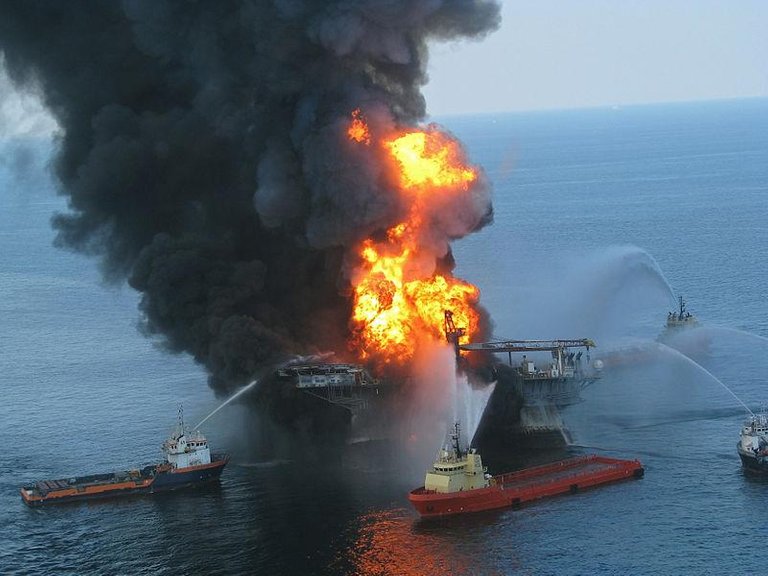
source
The ultimate objective of any well control program is to prevent a blowout. A blowout is a condition that allows uncontrolled flow of formation fluid such as gas, oil, water or other fluids into the well or into the atmosphere. Blowout is a direct result of what is known as "kick."
A well kick can be defined as the influx of formation fluids into the wellbore.
A kick is a well control problem in which the pressure found within the drilled rock is higher than the mud hydrostatic pressure acting on the borehole or rock face. source
Causes Of Kicks
The following are some of the causes of kick;
- Failure To Keep The Hole Full
When the drillstring is removed from the wellbore, the fluid level in the wellbore drops. The volume of the mud that drops is equal to the volume of metal in the drillstring that has been removed from the wellbore. Now, if the hole is not filled up when pulling the drillstring out of the wellbore a kick will probably occur.
- Swabbing
When the drillstring is removed from the wellbore, it is possible that the hydrostatic pressure opposite a given formation may be reduced giving rise to influx of formation fluid into the wellbore known as swabbing. When swabbing occurs, the drillstring should be returned to bottom and any formation fluid which have entered the wellbore should be circulated out before tripping operations are resumed.
- Insufficient Mud Weight
This problem is found in geographical regions where we have abnormally pressured reservoirs and it is common with exploration drilling and can also occur in development wells.
- Lost Circulation
This can cause the mud level in the wellbore to drop, thereby decreasing the hydrostatic head and this will result in a well kick if only hydrostatic pressure is less than the formation pressure. Some of the causes of loss circulation includes;
- Running the drillstring in the hole at excessive speeds.
- Excessive pump speeds while breaking circulation.
- poor mud properties. Source
- Trip Margin Too Low
When tripping (or making a connection), the mud pumps are not in operation. When the pumps are not on the hole, there are no annular pressure losses. The pressure losses act as back pressure on the formation. Thus, when the pumps are down, this pressure is lost and if the mud is near it's balance point, formation fluids may and can enter the wellbore.
- Drilling Into Another Well
In offshore development programs, it is quiet common to drill several directional wells from a fixed platform. If the well that is being drilled drills into the completion string of an existing well, a kick can occur.
- High Drilling Rate
High drilling rates through gas sands can supply gas from the cuttings. The gas from the cutting may reduce the hydrostatic head to a point that a kick may occur.
References
Thanks For Reading
Congratulations! This post has been upvoted from the communal account, @minnowsupport, by enajo from the Minnow Support Project. It's a witness project run by aggroed, ausbitbank, teamsteem, theprophet0, someguy123, neoxian, followbtcnews, and netuoso. The goal is to help Steemit grow by supporting Minnows. Please find us at the Peace, Abundance, and Liberty Network (PALnet) Discord Channel. It's a completely public and open space to all members of the Steemit community who voluntarily choose to be there.
If you would like to delegate to the Minnow Support Project you can do so by clicking on the following links: 50SP, 100SP, 250SP, 500SP, 1000SP, 5000SP.
Be sure to leave at least 50SP undelegated on your account.
nice attempt to talk about the causes of an oil well kick but you can do better. Join us here and contact a mentor so you can get better at this
